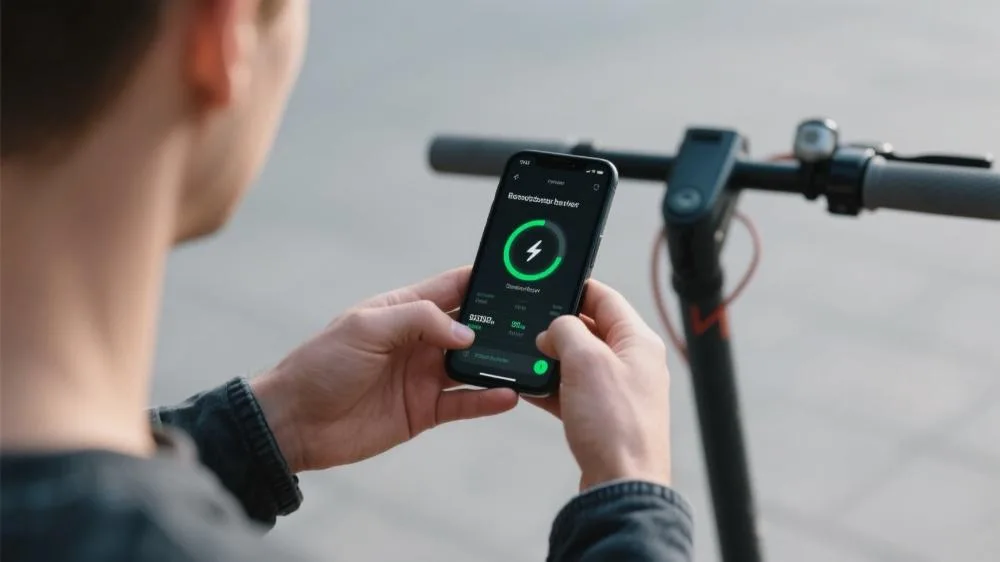how long does an electric scooter battery last per charge

How long does an electric scooter battery last per charge? For urban commuters across Western cities, electric scooter battery range directly impacts daily usability. According to 2025 data from the European New Vehicle Association (ENVA), average single-charge distance has reached 32.5km – a 35% improvement from 2020’s 24km benchmark. Specialist platform novascooter’s real-world tests demonstrate that understanding battery principles can extend effective usage time by 20-30%.
Modern e-scooter battery performance depends on six key factors: battery chemistry (determines base capacity), riding style (affects consumption), ambient temperature (alters discharge efficiency), payload (increases demand), terrain (changes output requirements), and maintenance (impacts health). Stanford University’s 2025 research reveals models with intelligent thermal management systems deliver 42% better winter range than standard units, reshaping product designs in Nordic markets.

Battery Technologies and Range Variations
Comparing Mainstream Battery Types
2025’s Three Primary Battery Systems:
- Lithium Iron Phosphate (LFP)
- Cycle life: 80% capacity after 2,000 cycles
- Single-charge range: 40-60km (48V/15Ah configuration)
- Temperature tolerance: Stable from -20℃ to 60℃
- Nickel Manganese Cobalt (NMC)
- Cycle life: 800-1,000 cycles
- Range per charge: 35-50km
- Energy density: 15-20% higher than LFP
- Solid-State (Experimental)
- Potential advantage: 50% range increase
- Commercialization timeline: Expected 2027
Selection Recommendations:
- Commutes <30km: Prioritize LFP batteries
- Weight-sensitive users: Opt for high-density NMC
- Extreme climates: Require thermal regulation systems
Calculating Real-World Range
Lab Conditions vs. Actual Usage:
- Standard testing: 75kg load/25℃/flat terrain/15km/h constant speed
- Reality: 90kg load/10℃/mixed terrain/variable speed
- Typical variance: Actual range averages 60-75% of rated value
Precise Estimation Formula: Effective range(km) = Battery capacity(Wh) ÷ [Grade factor×Load factor×Speed factor]
- Grade factor: 1.0(flat) to 1.8(10% incline)
- Load factor: 1.0(75kg) to 1.5(120kg)
- Speed factor: 1.0(15km/h) to 2.2(30km/h)
Practical Range Optimization Techniques
Riding Habit Adjustments
Five Energy-Saving Principles:
- Maintain 15-20km/h steady speed (25% more efficient than stop-and-go)
- Anticipate stops to minimize braking (each hard stop wastes ~300m range)
- Utilize regenerative braking (recovers 5-8% energy)
- Avoid overloading (every 10kg excess reduces range 8-10%)
- Select flatter routes (5° slopes increase consumption 40%)
Special Scenario Handling:
- Headwinds: Reduce speed and adopt aerodynamic posture
- Wet conditions: Increase tire pressure 10% to lower rolling resistance
- Cold weather: Pre-warm batteries indoors above 15℃ before riding
Battery Maintenance Strategies
Charging Best Practices:
- Optimal cycle: Maintain between 20-80% charge
- Charging temperature: Perform at 10-30℃ ambient
- Charger selection: Always use OEM smart chargers
- Long-term storage: Keep at 50% charge with monthly top-ups
Health Monitoring Methods:
- Full-charge voltage check: 54.6V±0.3V for 48V systems
- Capacity test: Record actual Wh output during complete discharge
- Internal resistance: Professional shop measurement every 6 months
In-Depth Range Factor Analysis
Temperature Impact Mechanisms
Performance Across Temperatures:
- 25℃ baseline: 100% performance
- 0℃ conditions: 15-20% capacity reduction/50% longer charging
- 35℃ heat: 30% cycle life reduction/watch for overheating
Mitigation Strategies:
- Passive insulation: Thermal wraps (5-8℃ improvement)
- Active heating: Consumes 3-5W but maintains optimal operation
- Smart preheating: Remote activation via mobile app
Battery Degradation Patterns
Typical Aging Curve:
- First 100 cycles: 3-5% capacity loss (initial stabilization)
- 100-500 cycles: 2-3% annual reduction (stable period)
- Post-500 cycles: Accelerates to 5-8% yearly (aging phase)
Warning Signs:
- Over 30% range reduction from original
- Noticeably shorter charging times
- Erratic charge level indicators
- Significant power output decline
Emerging Range Extension Technologies
2025 Innovative Solutions
Enhanced Energy Recovery:
- Four-stage regenerative braking: Auto-adjusts based on incline
- Solar supplementation: Integrated photovoltaic panels (3-5km daily boost)
- Supercapacitor buffers: Increase instant recovery to 25% efficiency
Smart Prediction Systems:
- Route learning: Optimizes estimates using historical data
- Real-time adjustments: Syncs with traffic light patterns
- Range alerts: Provides 15-minute warnings for low battery
User-Upgradable Options
Safe Enhancement Choices:
- Auxiliary battery: Parallel connection for 50% more capacity (professional installation required)
- Low-rolling-resistance tires: Reduce friction loss 8-12%
- Aerodynamic kits: Decrease wind resistance at higher speeds
Modification Considerations:
- Voltage must match original system
- Requires compatible charger upgrades
- May void manufacturer warranties
Professional Troubleshooting Guide
Sudden Range Drop Diagnosis
Step-by-Step Analysis: Symptom → Potential Cause → Solution 50% range loss → Faulty battery cell → Professional BMS inspection Incomplete charging → Damaged charger → OEM replacement Charge level fluctuations → Poor contact → Clean charging port
DIY Checks:
- Document complete charge/discharge patterns
- Verify tire pressure meets specifications
- Test consumption across different terrains
- Compare with historical range performance
Battery Replacement Decision Matrix
Replacement Indicators:
- Capacity below 70% of original
- Voltage drop >5% after full charge
- Internal resistance increase exceeding 50%
- Visible swelling or leakage
2025 Market Reference Pricing:
- LFP battery pack: $250-400 (48V/15Ah)
- NMC battery pack: $350-600
- Trade-in value: Up to $100 credit
